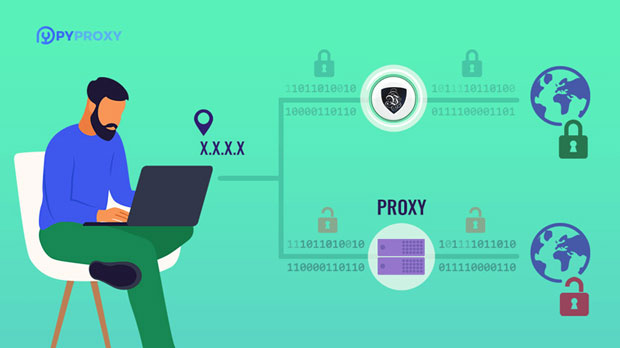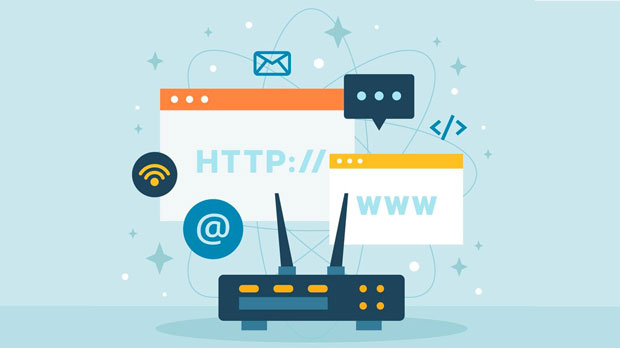When it comes to accessing international websites, proxy servers play a crucial role in enhancing online security, privacy, and browsing freedom. Two types of proxy servers that often come up in discussions are Elite proxies and Etisalat proxies. Both offer distinct features tailored for different needs, but when it comes to accessing international websites, the choice between Elite and Etisalat proxies can significantly impact user experience. In this article, we will compare these two proxy server options to understand their pros and cons in terms of accessibility, performance, and overall effectiveness in international browsing. What is a Proxy Server?A proxy server acts as an intermediary between a user and the internet. It processes requests from the user's device and then forwards them to the desired web server. The server then sends the requested data back through the proxy to the user. This process allows the user to browse the web anonymously and access websites that may be blocked in their region. Proxy servers also offer other benefits, including improved security, faster browsing, and the ability to mask the user's IP address.Understanding Elite Proxy ServersElite proxies, often referred to as high-anonymity proxies, are designed to provide maximum privacy and security. These proxies do not reveal the user's original IP address to the target websites, making them ideal for users who want to remain anonymous while browsing international sites. Elite proxies are often used by individuals who need to hide their true location or bypass geographical restrictions.One of the key advantages of elite proxies is that they do not leave any identifying information about the user behind. This makes them highly effective in avoiding tracking and surveillance. Additionally, these proxies are known for their reliability and performance, ensuring that users experience smooth and fast browsing speeds.However, there are some drawbacks. Elite proxies are typically more expensive than other types of proxies, and they may require more technical knowledge to configure and use effectively. Furthermore, not all elite proxies are created equal, so users need to carefully select a provider that offers high-quality, secure, and fast services.What is Etisalat Proxy Server?Etisalat is a telecommunications company that provides various internet services, including proxy servers. Etisalat proxies are generally used to control internet traffic within the network, monitor user activity, and ensure that access to certain websites is either restricted or allowed. These proxies are often used by businesses and organizations that want to manage employee internet usage or restrict access to specific sites.While Etisalat proxies are reliable for internal use within a company or network, they are not designed specifically for anonymous or international browsing. Etisalat proxies are often used for security purposes, such as preventing users from accessing malicious websites or filtering internet content. However, their performance in terms of accessing international websites may not be as optimal as elite proxies.Comparing Elite Proxy and Etisalat Proxy for International BrowsingWhen it comes to accessing international websites, the two proxy types offer different advantages and disadvantages. Let’s take a closer look at how they compare.1. Performance and SpeedElite proxies are generally designed to deliver fast browsing speeds and low latency. Since these proxies are tailored for anonymity and privacy, they are usually located in various international locations to provide global coverage. This means that users can access international websites without significant delays. Elite proxies often provide high-speed connections, making them ideal for users who require fast browsing for streaming, gaming, or general internet browsing.On the other hand, Etisalat proxies are primarily focused on monitoring and controlling internet traffic within a specific network. While they may offer stable connections for local or regional browsing, they are not optimized for international access. Users relying on Etisalat proxies for international browsing may experience slower speeds due to the additional layers of filtering and content restrictions in place.2. Anonymity and PrivacyOne of the most significant differences between elite proxies and Etisalat proxies is their approach to anonymity and privacy. Elite proxies are designed specifically for users who want to remain anonymous while browsing the internet. They mask the user’s real IP address and provide a high level of privacy by ensuring that no personal information is leaked to the websites being visited. This makes elite proxies ideal for users looking to access international websites without revealing their identity or location.In contrast, Etisalat proxies are often used for monitoring and restricting internet traffic. While they may provide some degree of anonymity within a controlled network, they are not designed to offer the same level of privacy as elite proxies. Etisalat proxies typically leave more identifiable traces and may even log user activity, which could be a concern for users seeking high levels of privacy.3. Geographic Restrictions and AccessElite proxies are commonly used to bypass geographic restrictions and access content that is not available in certain regions. Since elite proxies can be located in various countries around the world, they can route traffic through servers in different regions, making it easier for users to access international websites that may otherwise be blocked in their location.Etisalat proxies, however, are generally not designed to bypass geo-blocks. They are primarily used for managing local traffic and monitoring internet usage. While Etisalat proxies may provide access to local content, they are not equipped to handle the challenges of international browsing. As a result, users seeking to access international websites may find Etisalat proxies less effective in this regard.4. SecurityBoth elite proxies and Etisalat proxies offer some level of security, but elite proxies are typically more robust in terms of data protection. Elite proxies are designed to prevent IP and data leaks, ensuring that sensitive information remains secure while browsing international websites. This is particularly important for users who are concerned about cyber threats, identity theft, or online surveillance.Etisalat proxies, on the other hand, are more focused on filtering and controlling traffic. While they can prevent users from accessing malicious websites, they may not provide the same level of encryption and security features as elite proxies. For users who prioritize online security while accessing international websites, elite proxies are the better option.5. CostThe cost of using a proxy server is an important consideration for many users. Elite proxies tend to be more expensive than Etisalat proxies due to their advanced features, privacy, and performance. Users who prioritize anonymity, security, and fast international browsing may find the higher cost of elite proxies to be justified.Etisalat proxies, while generally more affordable, may not offer the same high-level performance and privacy features. For businesses or individuals looking to manage local traffic or monitor internet usage, Etisalat proxies can be a cost-effective solution, but they may not be the best choice for those requiring optimal international browsing capabilities.In conclusion, when choosing a proxy server for accessing international websites, elite proxies are generally the better choice. They offer superior performance, privacy, and the ability to bypass geographic restrictions, making them ideal for users who require fast, anonymous, and secure browsing. Etisalat proxies, while useful for managing local network traffic, are not as well-suited for international browsing and may not offer the same level of privacy or performance. Therefore, for those looking to access international websites with ease, elite proxies are the more suitable option.
May 22, 2025



































































